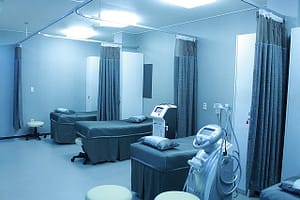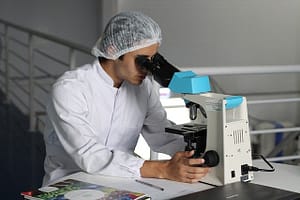In a post featured in https://www.has-sante.fr/jcms/c_2626164/fr/evaluation-des-infrastructures-de-simulation-en-sante, the same essential characteristics and advantages of simulation that other high-risk businesses have understood for decades are employed in healthcare. In healthcare, these comprise patient’s and suppliers’ safety, creating optimal learning conditions, concentrating and closed real-time responses, integrating multiple ability elements, and using simulation as a testbed to spot gaps in technology, procedures, and protocols. In this post, we give you an overview of the essential features and benefits of medical simulation.
Putting Safety First
 Concerning safety, simulation allows you to train tomorrow’s health professionals without putting today’s patients at risk. When real-world training is not acceptable due to safety concerns, simulation provides an opportunity to learn the essential and challenging skills needed for safe and reliable system operation. In high-risk environments, such as aviation and military operations, operators cannot control until they have achieved a predetermined level of performance proficiency in a simulated environment.
Concerning safety, simulation allows you to train tomorrow’s health professionals without putting today’s patients at risk. When real-world training is not acceptable due to safety concerns, simulation provides an opportunity to learn the essential and challenging skills needed for safe and reliable system operation. In high-risk environments, such as aviation and military operations, operators cannot control until they have achieved a predetermined level of performance proficiency in a simulated environment.
In healthcare, the simulated environment allows participants to safely make mistakes and learn from those mistakes while avoiding human injuries that might otherwise occur. The proficiency in performing critical tasks in most medical specialties has not yet been demonstrated, but it is essential to keep this in mind.
Optimizing Learning Conditions
 Simulations have the advantage of creating conditions that optimize the learning process. Much learning in the clinical setting occurs sporadically. What is learned through regular rotation depends mostly on the particular mix of individual demands to which collaborators are exposed. The second wave of collaborators will encounter a different blend of individual complaints. The growth of optimal study defines the intentional manipulation and scheduling of human demands, equipment anomalies, and organizational things together to expose contributors to an appropriate level of clinical struggle.
Simulations have the advantage of creating conditions that optimize the learning process. Much learning in the clinical setting occurs sporadically. What is learned through regular rotation depends mostly on the particular mix of individual demands to which collaborators are exposed. The second wave of collaborators will encounter a different blend of individual complaints. The growth of optimal study defines the intentional manipulation and scheduling of human demands, equipment anomalies, and organizational things together to expose contributors to an appropriate level of clinical struggle.
Using a crawl-walk-run method of understanding can expand the limited performance repertoire of experienced providers. More experienced providers often observe higher rates of simulated clinical fights, enabling optimal learning for efficient and effective simulation programs.
Provide Valuable Insights
Receiving feedback and knowing the results of one’s decisions and actions is the caliber that gives simulation its attractive and compelling quality. It turns original skeptics into believers. Feedback is what allows participants to recalibrate their performance. More specific feedback is more likely to be given during a briefing session with recommendations from a teacher to reinforce and strengthen the simulation experience’s salient lessons. However, not many simulations are conducted in real-time. In the case of disease conditions that are difficult to diagnose because they develop slowly over time, the regularity of signs and subtle cues could be highlighted and focused on the student if they condensed to work faster than in real-time. In this way, it is possible to show a greater scope and maturation over time of the person’s expositional needs with the intention to study them.
